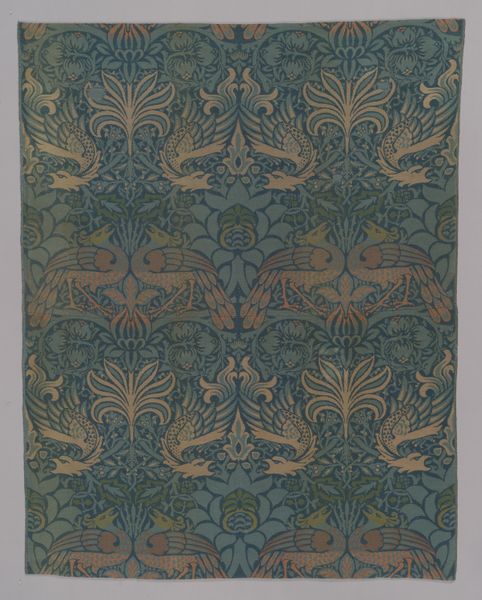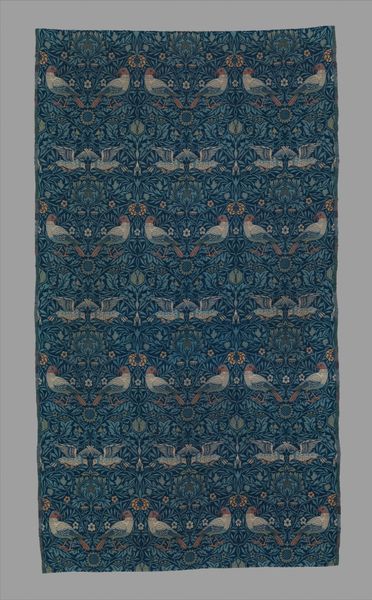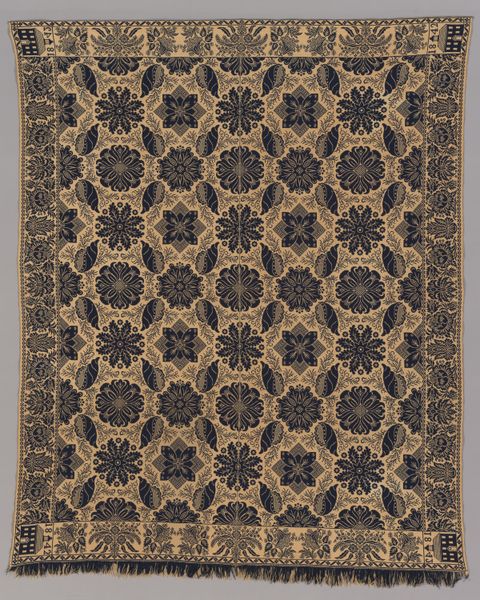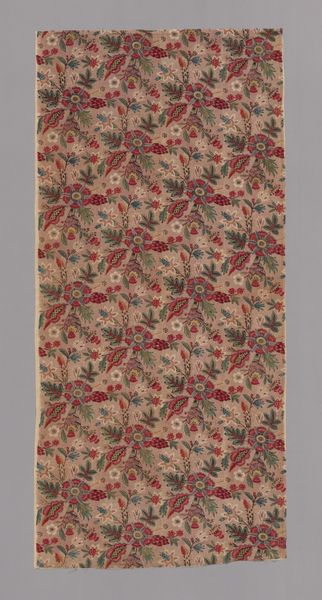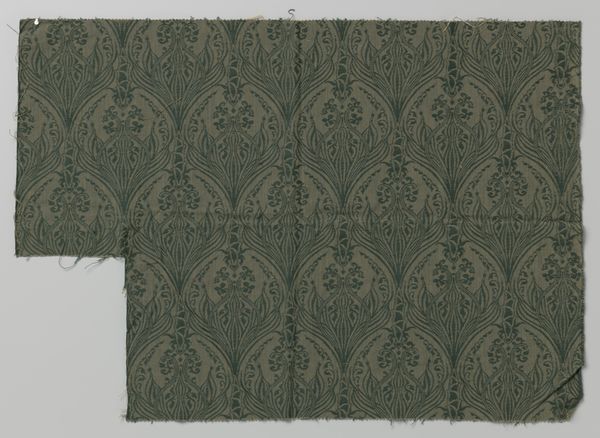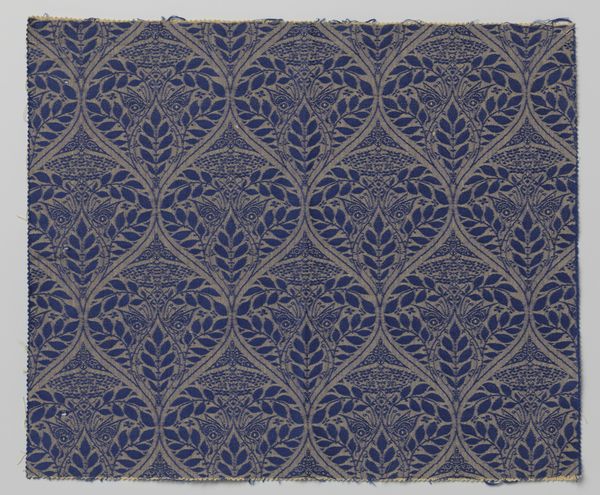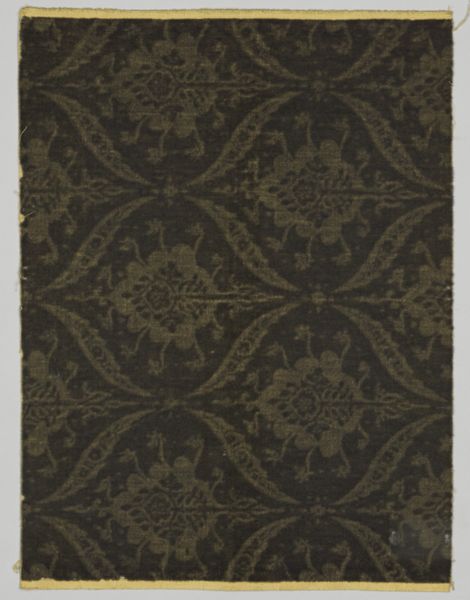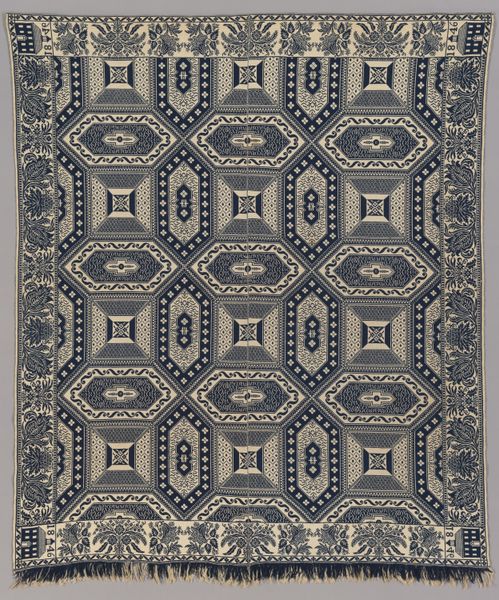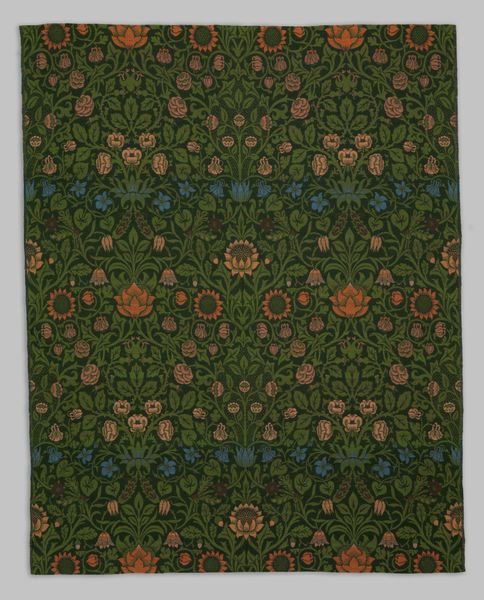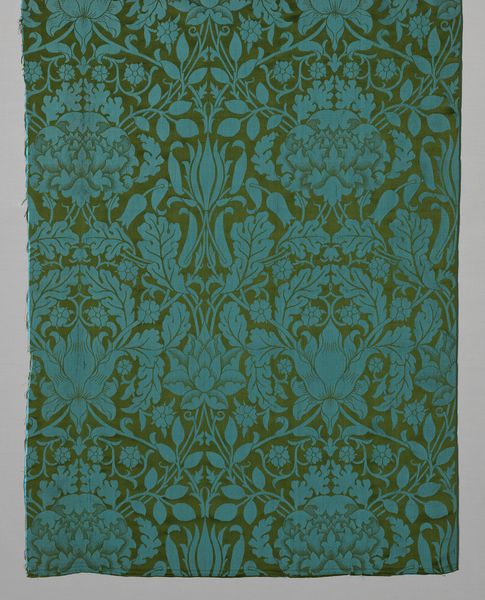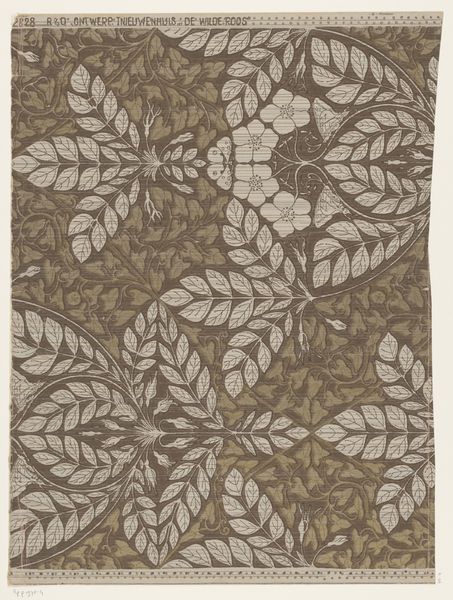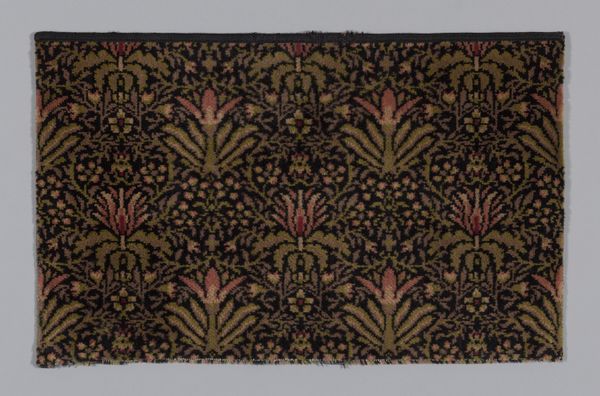
Dimensions: 218.5 × 126.9 cm (86 × 50 in.) Repeat: 83.2 × 41.7 cm (32 3/4 × 16 3/8 in.)
Copyright: Public Domain
Curator: What a perfectly stunning piece. Our visitors are now viewing "Tulip and Rose," a textile possibly dating back to 1876 and created by William Morris. The work is crafted from mixed media, primarily wool, and exemplifies the spirit of the Arts and Crafts movement here in England. Editor: It has a decidedly tranquil and muted quality to it, despite the vibrancy you would expect from floral motifs. The patterns pull you in and don't let you go, like an endless, calming echo. Curator: Absolutely. The choice of wool points directly to Morris's emphasis on material honesty and his broader socialist ideals. By reviving traditional weaving techniques, he directly challenged the mass-produced, often shoddy, goods of the Industrial Revolution. He aimed to bring art into everyday life. Editor: Looking closely, the repetitive pattern does much more than merely decorate. The intertwining forms create layers within layers and it shows a kind of masterful balance between nature and artifice. Do you notice the underlying structure that holds it all together? The color, too, contributes enormously to the cohesion. Curator: Precisely. And, in viewing 'Tulip and Rose,' we also need to remember Morris's own hands-on involvement in the dyeing process, using natural dyes derived from plants and minerals. This labor-intensive aspect also counters industrial production, embedding social commentary within the very fabric of his work. Editor: The detail achieved through what seems to be careful labor provides such depth and clarity, don't you think? You can almost feel the weave. It’s like looking at a garden frozen in time, each flower and leaf eternally preserved within the warp and weft. It’s a world where color and form work in harmony. Curator: Yes, by merging artistic creation with manual skill and ethical production, Morris not only crafted a beautiful design but proposed an alternative vision of labor and creativity. The repeated shapes suggest mass production, but the handmade process makes each repeat uniquely valuable, opposing the alienation of labor in factories. Editor: The tension is indeed captivating. Focusing purely on the surface aesthetic, the composition offers an array of textures and rhythmic interplay of color. This work transcends mere ornamentation; it speaks of order, and intention within an organic world. Curator: Thank you. Recognizing the intricate link between his materials, labor, and vision allows for a richer understanding of Morris's artistic legacy and of the social agenda underpinning works like this. Editor: And seeing how those elements all fall into place visually grants me a deeper sense of harmony within this remarkable fabric.
Comments
No comments
Be the first to comment and join the conversation on the ultimate creative platform.
